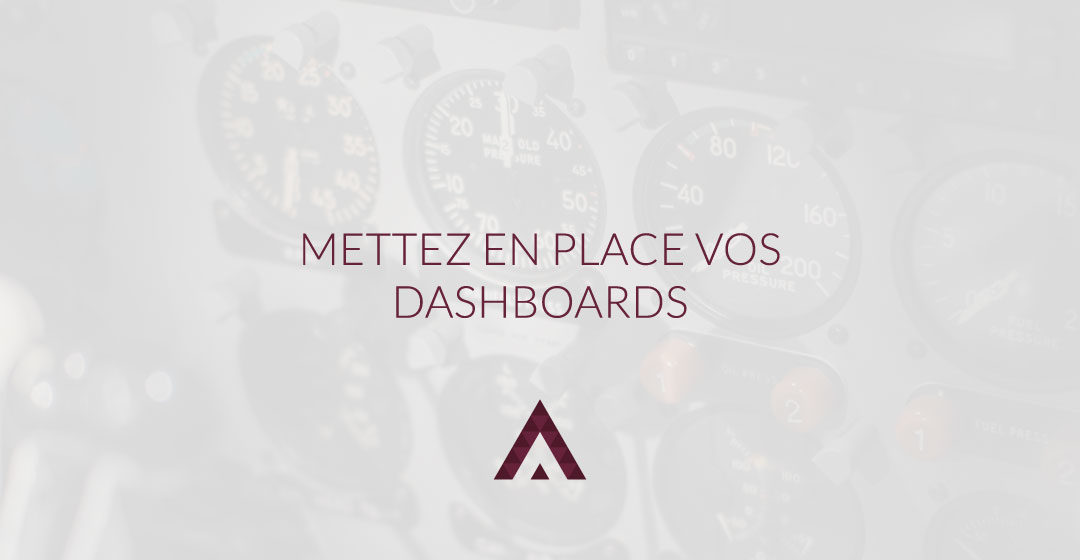If there is one thing an entrepreneur needs to master, it is the numbers. Being able to run your business based on reliable data that is regularly updated is a real asset as a decision maker. But it will also allow you to reassure your financial partners and investors. To be part of the camp of entrepreneurs who master this subject, there is a solution: set up dashboards.
Assessing the past, analyzing the present and anticipating the future
The three good reasons for setting up dashboards can be summarized: to study and understand what happened, to analyze the current situation and to make reliable and consistent forecasts.
As an entrepreneur, you need to set encrypted goals and monitor their achievement. If you are sailing on sight, without any guidelines, you will not be able to detect your mistakes or you will do so too late. A dashboard will allow you to control the achievement of your goals and to be able to act in case of too large a gap.
The dashboard gives you a consistent snapshot of your company’s situation to make decision-making easier.
It was mentioned at the beginning of the article, what defines your business beyond your business discourse is your figures. Without encrypted data, you risk losing all credibility near your financial partners. Your dashboard will allow you to analyze the current situation of your business and show you that you are following your performance closely. Ideal to reassure your partners about the health of your company.
With all your data, you’ll be able to make forecasts and build your budgets efficiently. Your dashboards will allow you to run your company. They will give you all the essential information to track your activity and anticipate your needs.
Follow our tips for developing your dashboards
Before building your tables, it is important to define your indicators.
Choose relevant indicators
Ask yourself a few questions first: What is the purpose of this dashboard ? What elements should be monitored ? What are the performance criteria for my business ? How do I measure the achievements of my objectives ? The goal is to find the most relevant indicators for your business. There is no model table for all companies.
Each business has its own unique features and therefore its own key indicators. This could include, for example, the number of new customers, the number of products manufactured, the average response time to customer requests, the conversion rate, the cost of customer acquisition, the ARPA, the churn rate. The important thing is that they all meet a real need, facilitate decision-making and are easily and quickly accessible. Incorporate your teams into the choice of indicators. They will express their needs to you and will be involved in the provision and use of the data.
Build your dashboards
Once you have your list of indicators, put them together in one or more dashboards. Depending on the maturity of your business, it may be useful to separate your indicators into several dashboards dedicated to each manager and to have a synthetic table dedicated to the manager.
Replace your Excel tables with thoughtful images and graphics.
Remember that the goal is to make decision-making easier and drive your business. So be synthetic and take care of the visual aspect of your reporting. Having an excellent table of 40 linesfilled with numbers won’t help you and no one will dare to look at it. Try for each indicator to have a visual or graphic representation of the data. In a matter of seconds, you’ll understand your company’s situation.
Follow and update your data on a regular basis
Once your paintings are inplace, you have to make them live. Determine a frequency of updates (monthly, weekly or even daily) and update your data regularly. It’s important to keep using your charts even (and most importantly) when your business is not doing well. Don’t make the mistake of turning a blind eye to your indicators when the situation is bad. Ostrich policy is rarely effective.
With these tables you will be able to take corrective action when you find too large a deviation from your forecasts or objectives. You will also be able to measure the impact of your actions and possibly adapt your strategy. And finally, you will be able to explain with reliable data your results. The reporting tables are therefore a great monitoring tool but also a great way to reassure your financial partners.
